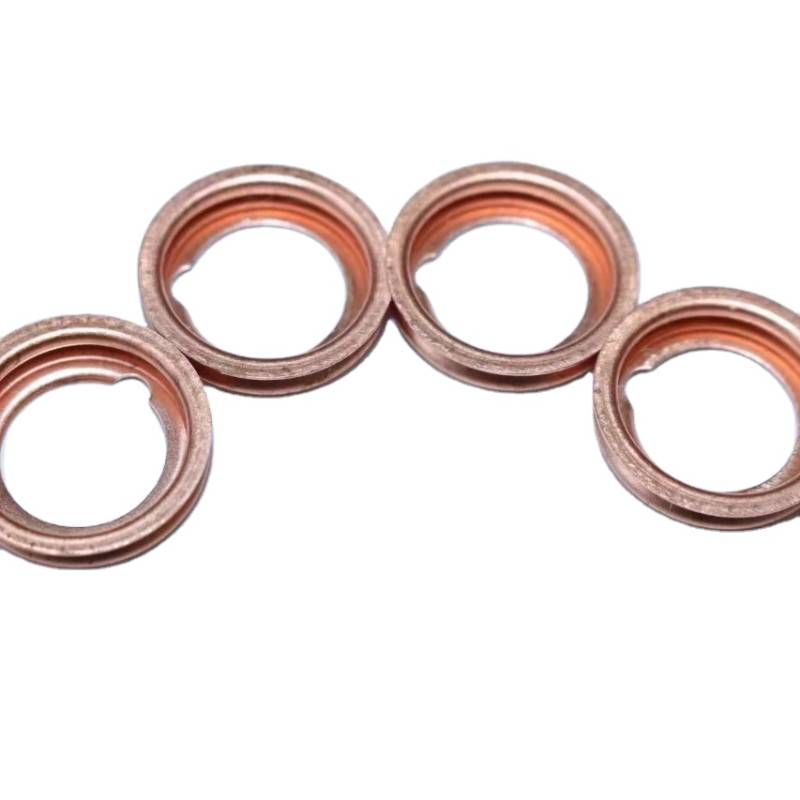Exploring the Characteristics and Applications of Gasket Flat Designs in Engineering and Industry
Understanding Gasket Flattability Importance and Applications
Gaskets play a critical role in various engineering and manufacturing applications, serving as seals that prevent the leakage of fluids or gases between two surfaces. One of the key characteristics that define the effectiveness of a gasket is its flattability. Flattability refers to the ability of a gasket material to create a uniform sealing surface when compressed. This property is particularly important in ensuring a reliable and durable seal in mechanical systems, automotive engines, piping systems, and numerous industrial applications.
The Importance of Flattability in Gaskets
A gasket that is not properly flat or cannot maintain a flat profile under compression can lead to several issues. These may include leaks, reduced seal integrity, increased wear and tear on the machinery, and even catastrophic failures in critical systems. In industries such as aerospace, oil and gas, and pharmaceuticals, where precision and reliability are paramount, a gasket’s flattability can directly impact safety and performance.
Moreover, flattability affects the gasket’s ability to accommodate surface irregularities between mating surfaces. In practical applications, it is common for the surfaces of metals to have some degree of roughness or imperfections. A gasket that is highly flattable can compress evenly, filling in those gaps and providing a secure seal. This adaptability not only enhances the performance of the gasket but also extends the lifespan of the components it connects.
Factors Influencing Gasket Flattability
Several factors influence the flattability of a gasket, including the materials used, thickness, and manufacturing processes. Common gasket materials include rubber, cork, metal, and composite materials. Each material has unique properties that affect its performance
1. Material Composition The choice of material is crucial. For example, softer materials like rubber may exhibit excellent flattability but may not withstand high pressures or temperatures, while metal gaskets, though highly durable, may require additional treatments to enhance their flatness.
gasket flat

2. Gasket Thickness Thicker gaskets can sometimes provide better sealing in applications with rough surfaces, as they can conform more easily. However, excessive thickness may lead to difficulties in achieving proper compression and sealing performance.
3. Manufacturing Quality The quality of the manufacturing process, including cutting, machining, and finishing, can significantly affect flattability. Gaskets that are precision-cut and machined will typically have better flatness and seal more effectively compared to those that are poorly manufactured.
4. Compression Response Different gasket materials respond to compression in varied ways. Understanding the stress-strain behavior of gasket materials can aid engineers in selecting the right type for a specific application.
Applications of High Flattability Gaskets
High flattability gaskets are particularly advantageous in applications where reliability and performance are critical. In the aerospace industry, for instance, the flattability of gaskets used in fuel systems can prevent fuel leaks and reduce fire hazards. In the automotive sector, gaskets in engines must maintain integrity under varying pressure and temperature conditions, making flattability a crucial factor in design and selection.
In industrial piping, gaskets that can maintain their flattability in high-pressure and high-temperature environments ensure the safety of operations by preventing hazardous leaks. Additionally, pharmaceutical manufacturing requires gaskets that not only maintain flattability but also meet stringent cleanliness standards, ensuring no contamination occurs.
Conclusion
In conclusion, the flattability of gaskets is a vital characteristic that impacts their sealing effectiveness and reliability in numerous applications. Understanding the intricacies of gasket materials, design, and manufacturing can help engineers and manufacturers select the right components for their specific needs, thereby enhancing safety and performance across various industries. Proper attention to flattability can lead to better engineered solutions, ultimately advancing the efficiency and reliability of mechanical systems.
-
Understanding the Importance of the Crankshaft Oil Seal in Engine Performance
News Jun.16,2025
-
The Unsung Heroes of Engine Protection: Understanding Automotive Shaft Seals and Oil Seals
News Jun.16,2025
-
Keeping the Engine Tight: The Role of Crankshaft Seals and Gaskets in Oil Control
News Jun.16,2025
-
Complete Protection in Harsh Conditions: A Deep Dive into Cassette Seals
News Jun.16,2025
-
Choosing the Right Oil Seal: A Guide to Trusted Brands and Suppliers
News Jun.16,2025
-
Advanced Sealing Technologies: Exploring the Range of Modern Oil Seals
News Jun.16,2025
-
Your Essential Guide to Car Repair Kits: From Rust to Dings
News Jun.13,2025
Products categories















